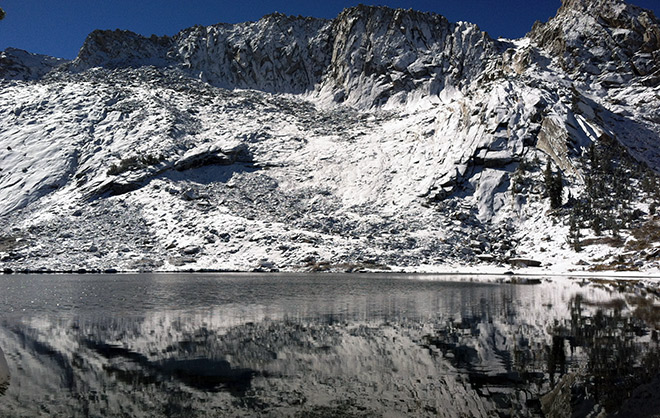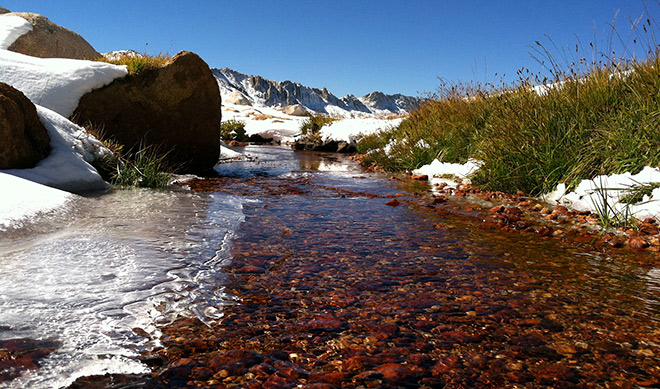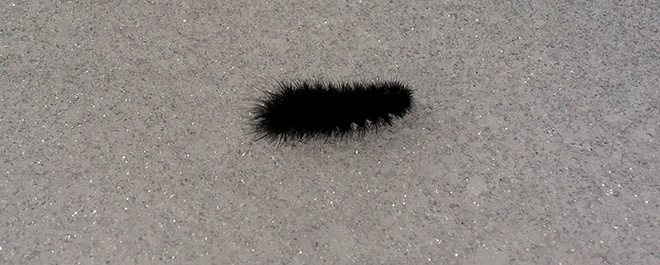Although a respectable storm, it is likely that by the time you read this most of the snow that fell will be melted by the stubborn September sunshine. Emerging from the tent the morning after the storm, I was greeted by almost a foot of new snow, which quickly settled and turned into a thick wet slop as the day warmed up. With the trail home passable but messy, I stayed put, spending the day in camp reading, drying some wet gear, and listening to the snow peel off the north face of Ragged Peak with dull thunder.

Despite the short-lived nature of this storm, and the blessedly warm weather that followed, it served as a stern reminder that WINTER IS COMING. This is an easy thing for us to forget at this time of year, after a hot and dry summer in the Sierra. The residents of the high country must continue preparations for migration, hibernation, or resistance of the harsh winter. Marmots become even more ravenous, packing on the pounds for their long sleep. Pikas share habitat with marmots, but have a different strategy, remaining active all winter. They, like me, were likely cheered by the disappearing snow, giving them another chance at collecting grass before more snow falls. The mule deer and their main predator, the mountain lion, turn their gaze downslope to lower elevations, thinner snowpack and easier travel. The ducks, who complained loudly while paddling the lake in the snowstorm, will depart soon as well, favoring open water to ice.

Not everything can flee or sleep away the cold winter, particularly the trees at high elevations. The Lodgepole pines surrounding my campsite will store some extra sugar for the cold season, lowering their freezing point. Many trees that live in alpine environments are adapted to the possibility of freezing. Unlike humans, the trees are "good" at freezing, building up ice between their cells instead of within them, thereby preventing cell damage.

Humans are not so well adapted. In other words, we are bad at freezing. Travel into the backcountry at this time of year requires rigorous preparation if we are to enjoy our trip in good form. Yosemite's high country is an amazing place to visit in autumn and winter, as these visits allow us to observe the changing of the seasons and the adaptations required to survive these changes. However, we must adapt and prepare, too. Learn more about winter wilderness travel at: https://www.nps.gov/yose/planyourvisit/wildwinter.htm
Happy Autumn!
